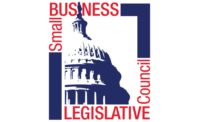Many spray foam contractors are aware that the industry is transitioning from closed-cell foams using HFC blowing agents to systems using low global warming potential, HFO blowing agents.* The new HFO blowing agents significantly reduce the carbon footprint of closed-cell SPF, compared to HFC foams.
Several states have already banned HFC foams during the past three and a half years. On Jan. 1, 2025, a complete, nationwide ban on the manufacturing of HFC, closed-cell SPF systems will take effect. HFC foams manufactured before Jan. 1, 2025, can be sold and applied until Jan. 1, 2028. With product shelf-life a major consideration, contractors should plan their HFC foam inventories accordingly.
This transition means that all U.S. spray foam contractors should switch to closed-cell foams using low-GWP blowing agents as soon as possible. With every change in blowing agent, there are other chemicals that may change in the formulation, such as polyols, catalysts and surfactants. While your existing equipment will remain compatible with these new foams, it is important to note that there may be variations in chemical temperature settings, spray techniques, maximum pass thicknesses and wait times between passes – as is true when you change between manufacturers. These differences are specific to each product and are described in the manufacturer’s installation instructions.
If you have not yet used HFO foams, now is the time to start. Over the next several weeks, the Spray Polyurethane Foam Alliance strongly encourages you to contact your chemical supplier to ensure that all installers receive proper training on the handling and installation of the new foams. Proper training will ensure a smooth transition and maintain the high standards of your installations.
Thank you for your attention to this important matter and your continued commitment to installation quality and safety.
*There are other options for low-GWP blowing agents in closed-cell SPF, but nearly all U.S. contractors will be using HFO blowing agents.







